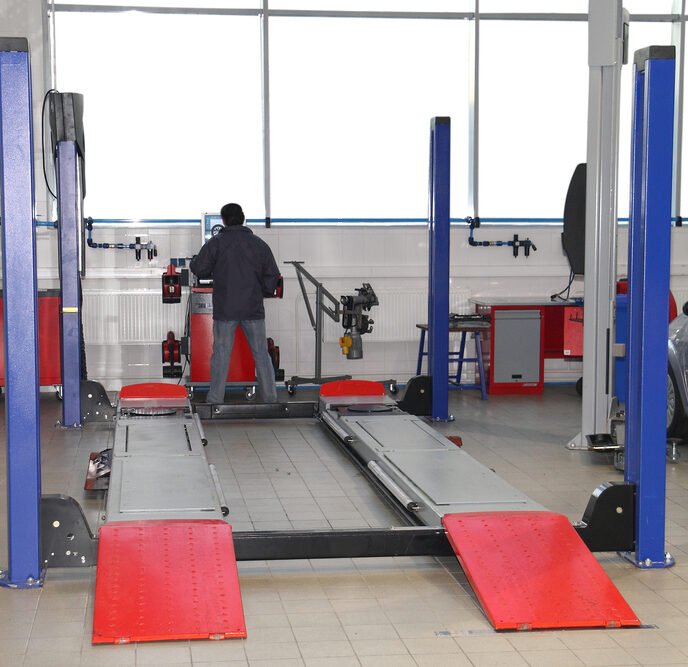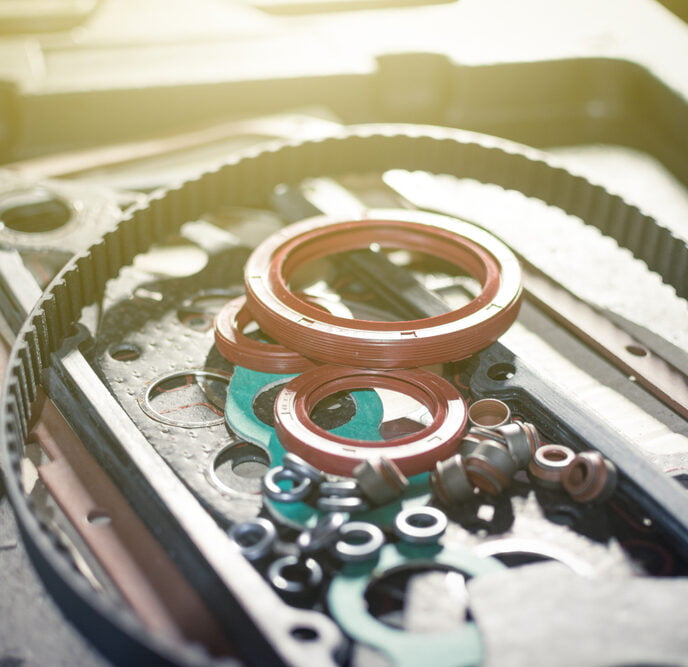Outdoor Car Lift Installation: Everything You Need to Know
Brainstorming how to install another car lift in the shop can be stressful when floor space is in short supply. That’s why some decide to install an outside car lift.
Even when the shop has room for an additional auto lift, you may notice that limited ceiling height is not compatible with the lift type you want. Perhaps you feel that installing a car lift outside the shop is your last remaining option and are questioning can you put a car lift outside. Deciding to install a car lift outside comes with many considerations. Although you can install a lift anywhere outside your auto shop, it might not be the wisest option. From outdoor hazards to the additional installation measures and maintenance needed, we discuss everything you should know about installing a car lift outside before you make the final call.
Outdoor Car Lift: What Are Outdoor Hazards?
A typical car lift appears seemingly indestructible with its heavy-duty composition and thick metal framing. However, if installed outdoors, the natural elements inevitably deteriorate and compromise the structure of an outdoor lift through several different avenues.
Temperature
Installing a car lift automatically subjects the machinery into unmanageable temperatures. Car lifts were manufactured with indoor use in mind, intended for installation in a temperature-controlled environment. A car lift should only operate in temperatures ranging from 41-104 degrees Fahrenheit with 30-95 percent humidity. When temperatures descend below this range, the hydraulic fluid will no longer pump properly, preventing the lift arms from being raised or lowered. Such malfunctions could cost your auto shop a great amount of time and money to repair. In any scenario where temperatures could rise above 104 degrees Fahrenheit, you run the risk of drying out the hydraulic lines within your open-air car lift.
Sunlight
Keeping your car lift outside allows full exposure to sunlight, which will bring extensive damages over time. Consider also the factor that sunlight will heat the metal frame of your lift. A surface too hot to touch could impact how often you use the outdoor car lift. Additionally, extended exposure to harmful UV rays breaks down the plastic parts of your car lift like the reservoir tank and dries out hydraulic lines. Therefore, installing and keeping a car lift outside with exposure to sunlight will ultimately result in regular repairs and component replacements.
Water Damage
Though your lift is largely comprised of metal and plastic components, moisture will damage any electrical wiring or rubber parts within the lift unit. Even if you ensured that all wiring and rubber parts are protected from water damage, your metal components will quickly rust with regular contact with moisture. Keep in mind that if your chains and cables begin accumulating rust, your car lift will become a safety hazard. Though you can lift a rusty car, you should never service a car with a rusty lift.
Salty Air
If your auto shop is located near any coastline or area with frequent snowfall, salty air or roads may be the most harmful outdoor hazard to your car lift. Just as moisture causes rust, salt quickly corrodes in contact with metal. As a result, installing a car lift outside will require extra maintenance and attention when the snowplows begin salting the roads.
Installing an Open-Air Lift Outside Your Shop: What’s Different
Before installing an open-air lift outside your shop, be sure to adhere to all installation protocols. Though similar to a standard lift installation, an outdoor car lift has two key changes: electrical and concrete compliance.
Electrical Compliance
When installing an outdoor car lift, you must ensure that all electrical work meets the local codes. For example, you may need to check that the electrical wiring complies with Ground Fault Interrupter (GFI) circuit breakers and watertight conduit and fittings.
Concrete Compliance
Did you know of the 3000psi requirement for a car lift’s installation? If your outdoor lot is asphalt, know that you cannot not meet the compliance requirement. With heat, asphalt will soften and release lift anchors. The only way to continue installation on an asphalt lot is if you remove a section and pour a concrete pad where the lift will go.
How Can I Maintain an Outdoor Car Lift?
Though similar to the preservation and upkeep of standard lifts, maintaining an open-air lift requires more time and attention due to the outdoor hazards. While many super structures may be coated to resist rust, they will need to be inspected more often to ensure their integrity. Again, if your auto shop resides near a coastline or in a climate subject to snow, your greatest concerns will be temperature, moisture, and salt. Therefore, perform routine inspections of your outdoor lift to prevent your lift from rusting or corroding. If your shop is in a hot and dry environment, consider installing a hanger or other method of shade to protect your hydraulic lines from drying out.
Specialty Custom Applications Solved with SVI International
If you still intend to install a car lift outside the shop after consideration, we are here to help. SVI International, Inc is the industry leader in automotive lifts and lift repair parts, providing over 40,000 parts for a plethora of lifts. SVI is dedicated to find innovative solutions to your industry challenges. If a required part has been previously discontinued by its original maker, our team of fully degreed mechanical engineers design an alternative solution that others won’t be bothered to help with.
Maintaining the integrity of existing lifts is a crucial component to proper usage, and we strongly discourage the use and operation of a damaged lift. Our three “Ready-Ship” warehouses ensure that our solutions are delivered quickly, without affecting a business’ bottom line. If you are in need of repair parts or complete new lifts, explore our extensive inventory. To inquire about our products or request a quote, contact our team today at (800) 321-8173 or via our online contact form.


